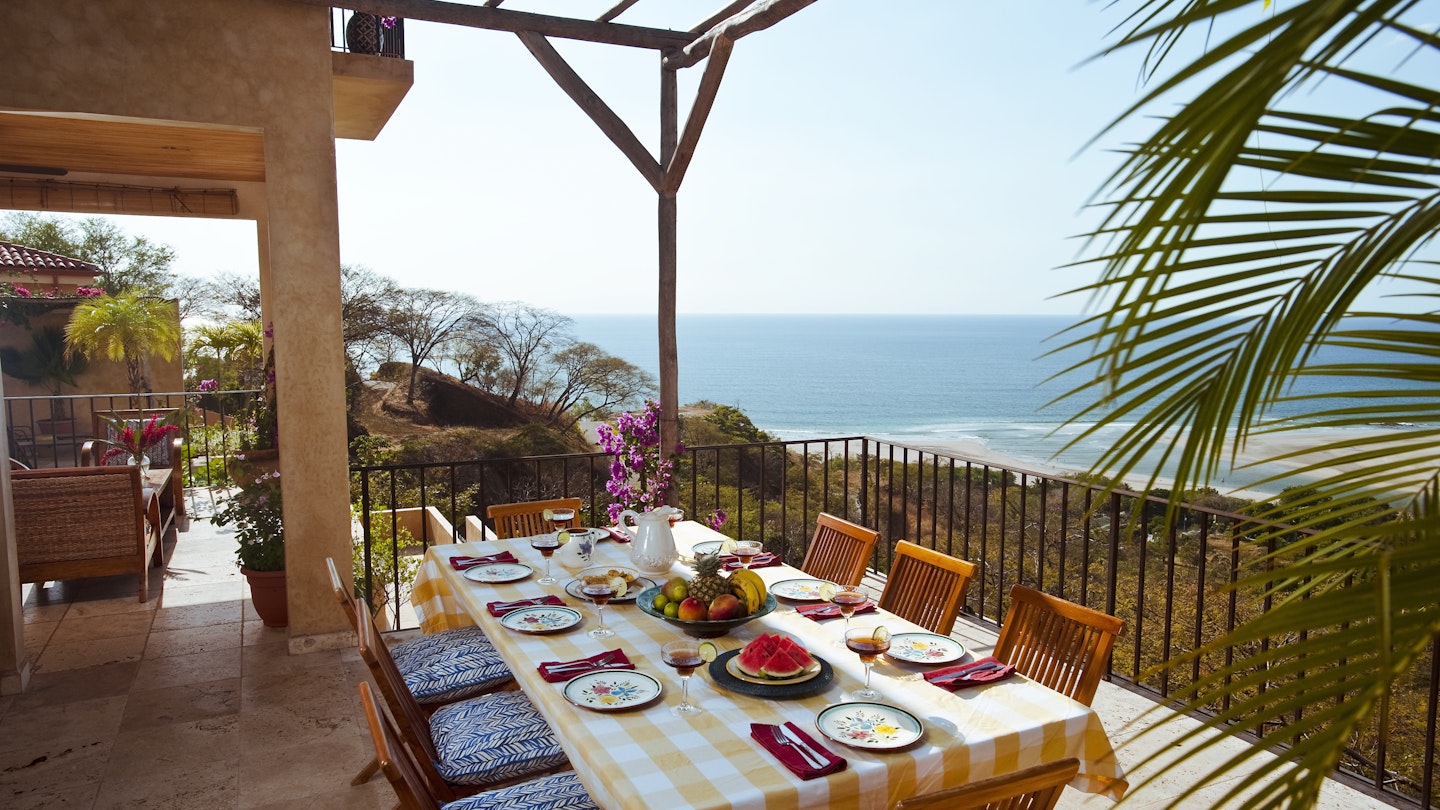Traditional Costa Rican fare predominantly features comfort food that includes beans, rice, fried plantains, accompanied occasionally by chicken, fish, or beef. Recently, locals have begun to incorporate the country’s fresh and abundant produce into their meals, resulting in dishes that are both inspiring and delightful.
With an extensive coastline, seafood is abundant as well, and fish dishes are typically fresh and flavorful.
Hydrate with Fresh pipa fría
To enjoy a refreshing drink, seek out a vendor who will skillfully hack the top off a coconut with a machete and provide you with a straw to sip the sweet coconut water directly.
Where to try it: At roadside vendors across Costa Rica.Spice Up Your Mango with Salt, Lime, or Chili
This ultimate refreshment comes sold in plastic bags with salt, lime juice, and sometimes chili powder. It’s the perfect treat to enhance your mango experience.
Where to try it: The farmers market on Plaza Ferias in Alajuela.
Taste Sweet guanabana
Known commonly as soursop, this sweet and sticky fruit is best eaten fresh wherever you may find it.
Where to try it: Tamarindo Farmer’s Market, near Playa Tamarindo on the Península de Nicoya.Grab the Perfect Takeaway Snack: patí
This flaky, Caribbean-style semicircular turnover is filled with a savory mix of meat, onions, garlic, and spices. A patí is a fantastic takeaway to enjoy during bus rides or picnics.
Where to try it: Soda El Patty, a rustic nine-table Caribbean restaurant in Puerto Limón.Try Roasted pejivalle at a Roadside Stand
The roasted peach-palm fruit is a beloved roadside snack, enjoyed warm and salted, often with a dash of mayonnaise added by locals.
Where to try it: Freshly roasted pejivalle can be found at numerous roadside stands nationwide.
Leftovers Served Up as gallo pinto for Breakfast
For breakfast, Ticos commonly enjoy gallo pinto, which is a stir-fry of last night’s rice and beans. This dish, when combined, yields a speckled appearance and is typically served with eggs, cheese, or natilla (sour cream). It’s economical, filling, and delicious.
Where to try it: Sodas (inexpensive eateries) throughout Costa Rica serve gallo pinto, with beachside views available at Sheriff Rustic on Playa Sámara.Slurp Down a rondón Stew
This delicious coconut milk-based seafood gumbo, rondón, derives its name from the term “rundown,” reflecting its versatile ingredients based on what the chef has available.
Where to try it: Excellent rondón soup can be enjoyed at local establishments.Order a Refreshing Bowl of Ceviche
Although not traditional Tico fare, ceviche is commonly found on menus. It is usually made from fresh fish like pargo (red snapper) or dorado (mahi-mahi) marinated in lime juice with chili, onions, tomatoes, and herbs, served chilled.
Where to try it: Fresh ceviche can be found at notable establishments.Snack on chifrijo, a Rainbow in a Bowl
Many bars serve this popular snack, chifrijo, named after its primary ingredients, chicharrón (fried pork) and frijoles (beans). It incorporates diced tomatoes, spices, rice, tortilla chips, and avocado.
Where to try it: Great views accompany the best chifrijo at local establishments.
Vegetarian and Vegan Options
Costa Rica is generally welcoming for vegetarians, offering abundant rice, beans, and fresh fruits. Many farmers’ markets showcase seasonal produce, making it easy to experience the country’s agricultural bounty.
Restaurants are typically willing to prepare veggie casados (set meals) on request, and many now feature these dishes on their menus. Lodges providing all-inclusive meal plans can often accommodate vegetarians with prior notice.
While gluten-free and macrobiotic options are more limited, an increasing number of establishments, particularly in urban areas, are responding to dietary needs, including vegans.
Give It a Try: Local Surprises
Mealworms and Crickets
Insect-based dishes are becoming popular, with many suggesting that insects may be a crucial part of the future food landscape. This could be an intriguing option for adventurous eaters.
Mondongo
For those exploring local favorites, tripe intestines, known as mondongo, are surprisingly spicy and a delightful surprise.
Meat on a Stick
Found at roadside stalls and local festivals, this enigmatic Tico delicacy, meat on a stick, is known for its delicious aroma and flavor, especially after being brushed with spicy sauce.
A Year in Food
Food festivals are typical at the end of the rainy season, yet Costa Rica’s year-round farmers markets offer a plethora of fresh fruits and vegetables.
Rainy Season (October and November)
During this time, mangoes and mamon chino (rambutan) come into season, celebrated with various agricultural festivities.
Christmas (December)
Tamales, made with masa and traditionally stuffed with pork and vegetables, are especially popular during the holiday season.
Coffee Harvest (September to January)
This period brings an influx of seasonal workers from nearby regions to harvest Costa Rica’s renowned coffee beans.
Whether you’re looking to savor local cuisine or try new foods, Costa Rica offers a rich culinary experience that is diverse and inviting.





